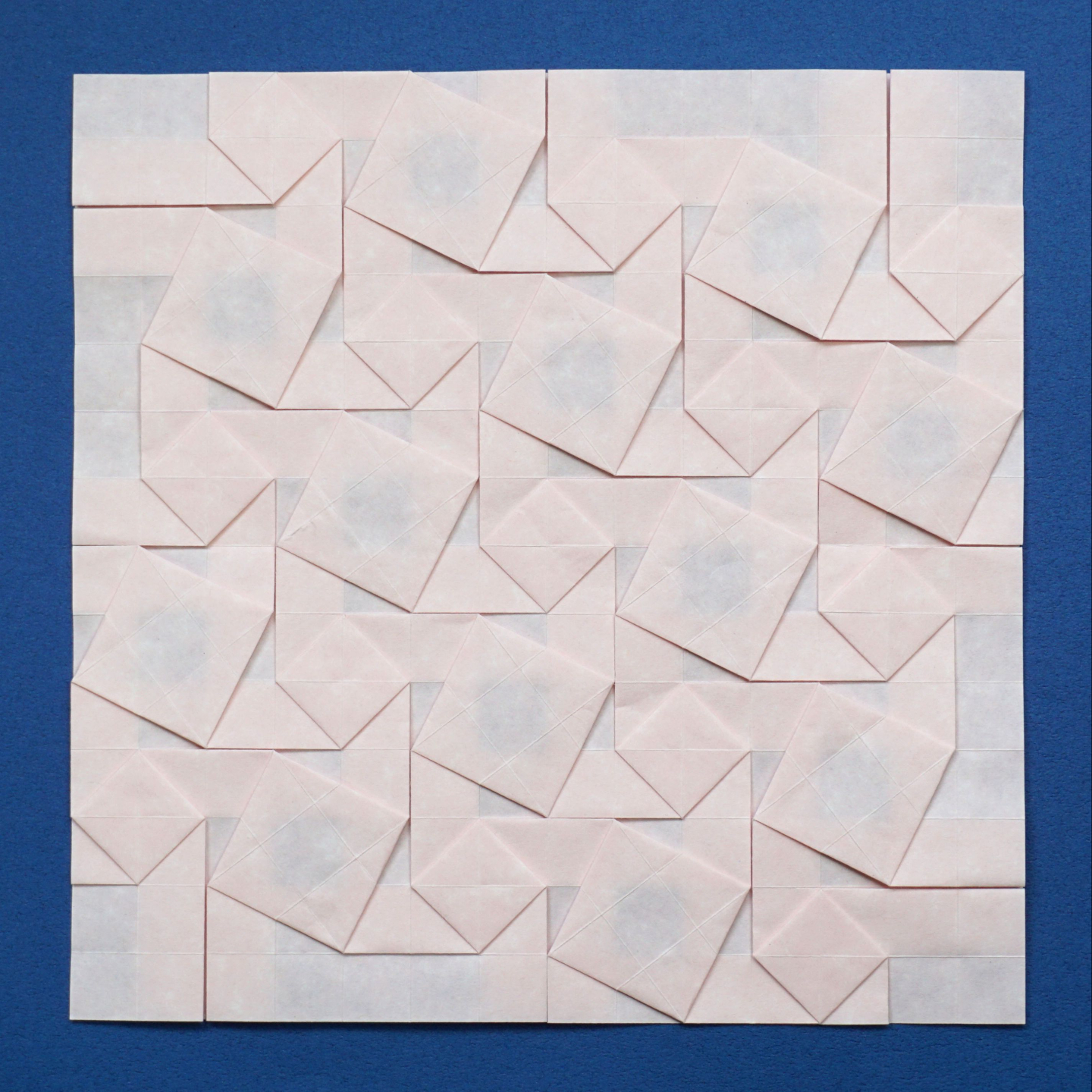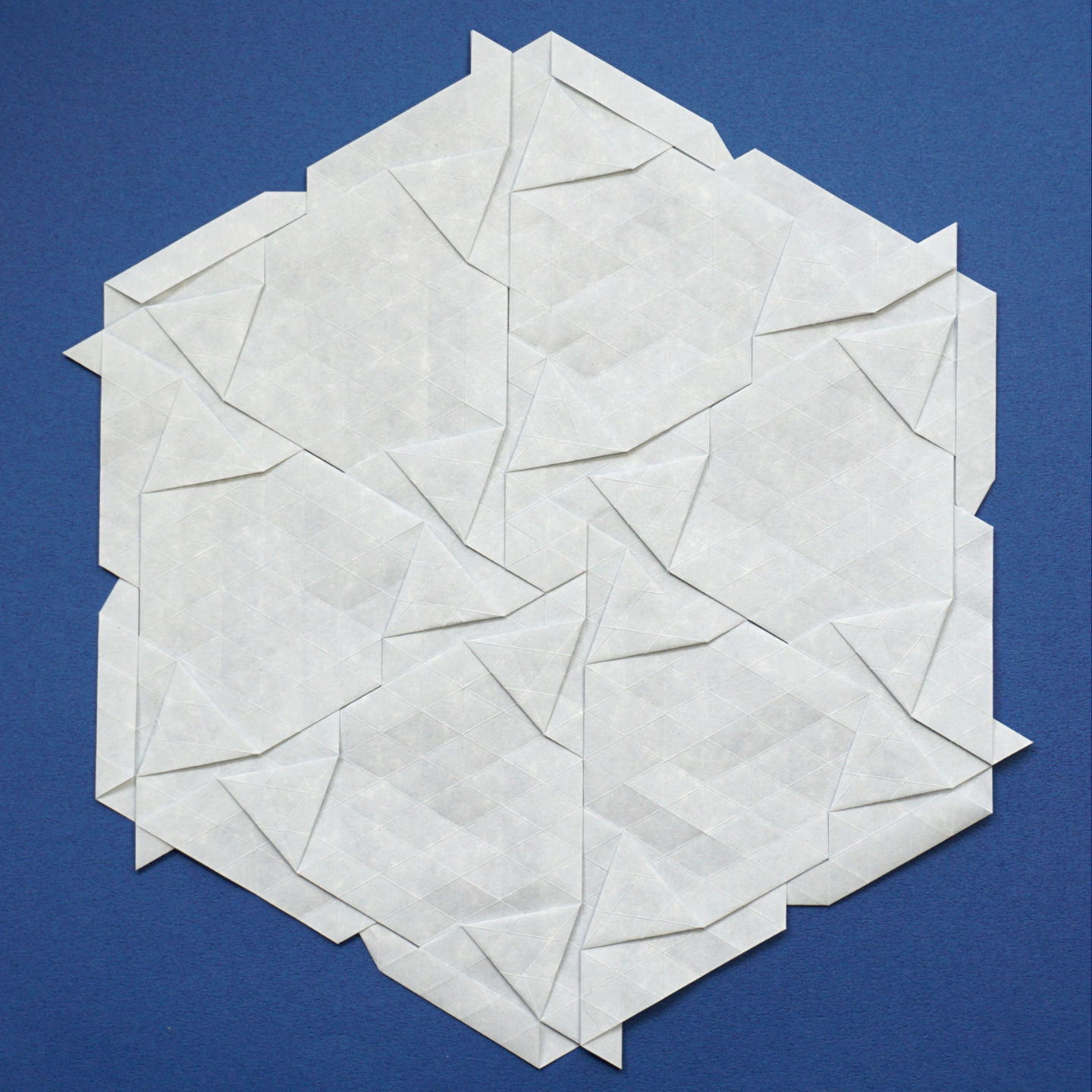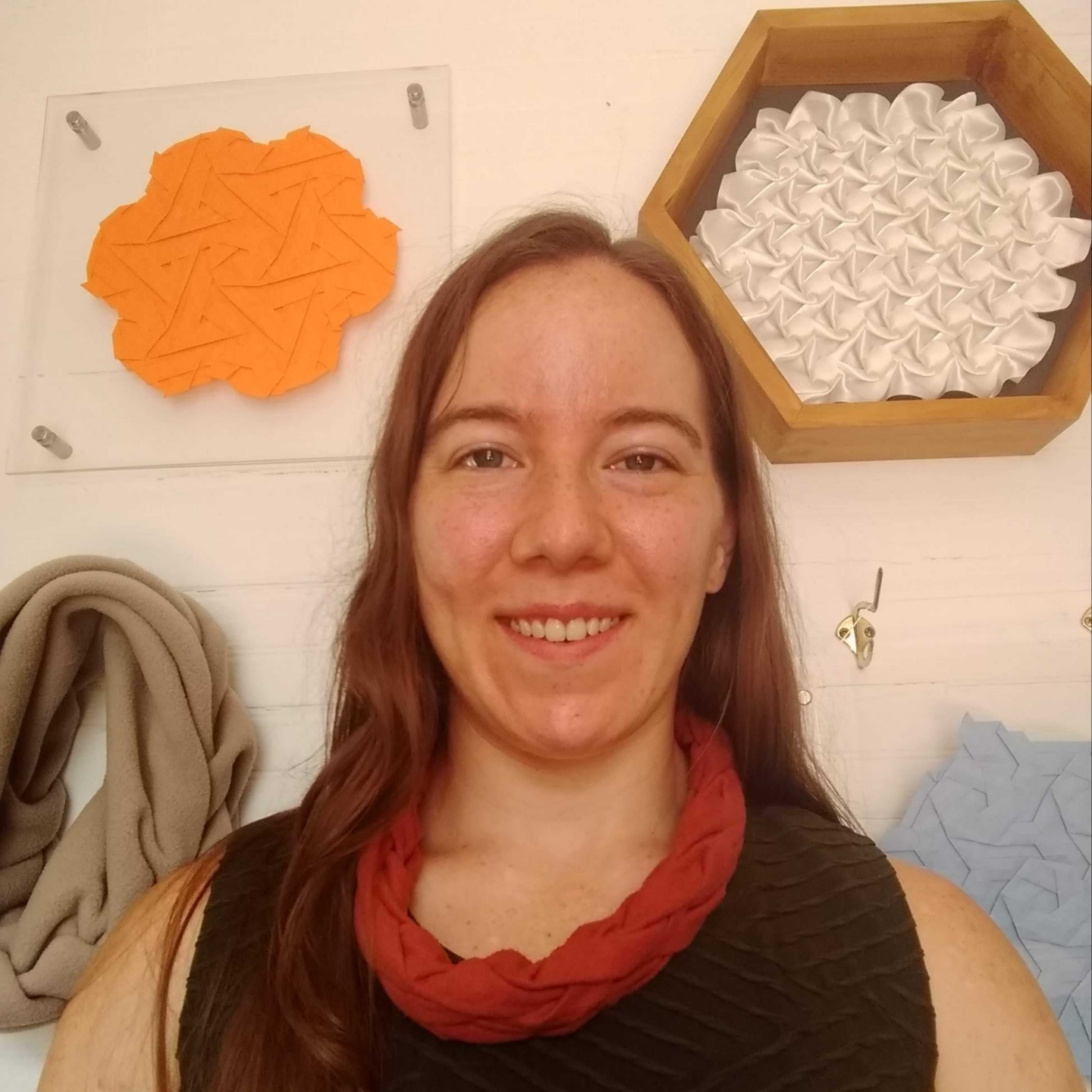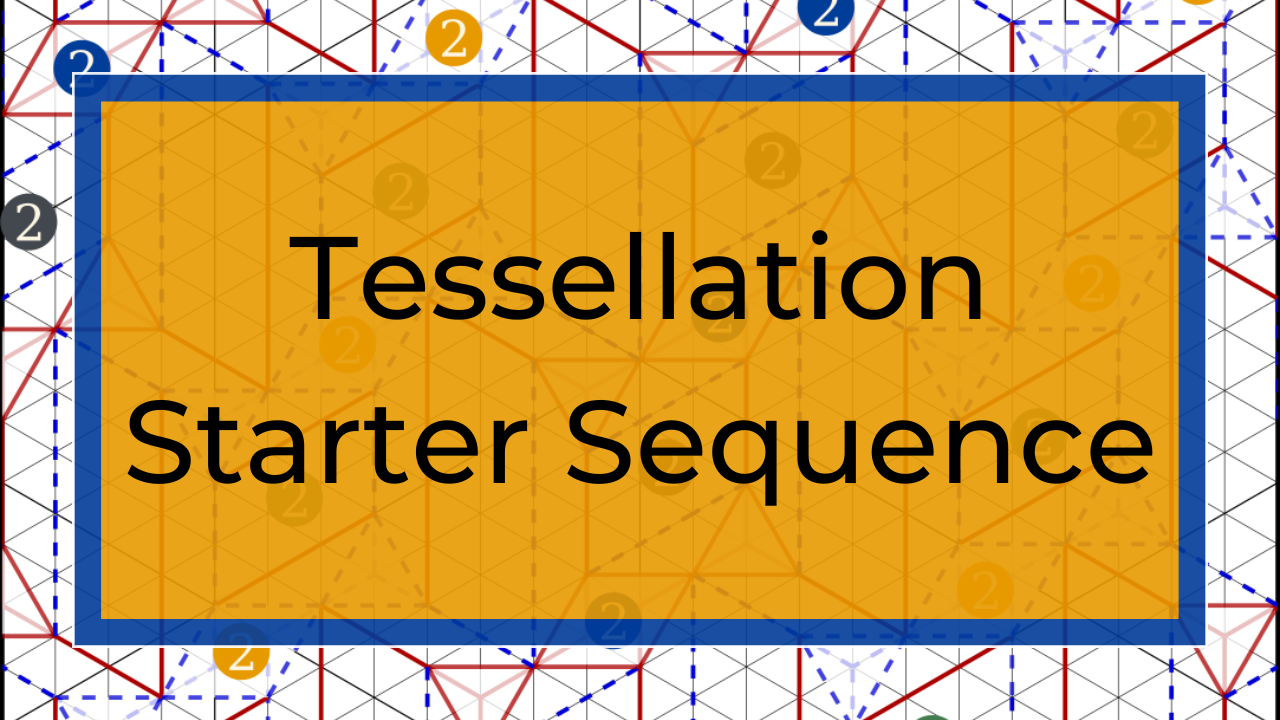Origami Tessellations, Twist by Twist
Tessellation Starter Sequence
Learn tessellation folding skills from gridding to high-intermediate level
Why fold origami tessellations?
Origami tessellations are repeating geometric patterns folded from a single sheet of paper.
My style of folding adds one twist at a time, avoiding the risky process of precreasing everything and collapsing the pattern all at once.
Tessellations can be repeated infinitely and there are infinitely many of them to choose from - even while sticking to the basic twists.
The process of folding the background grid before adding twists to the paper is repetitive and meditative, just like simple knitting or crochet.
Folding origami tessellations means working with your hands to solve puzzles posed by the paper while having a direct connection to the infinite.
Then you get a beautiful piece of art at the end that shows startling backlit shadows and makes an excellent window decoration or gift.
Why wouldn't you fold origami tessellations?
I will warn you, though, this art can be addicting and it may result in decreased time on screens, a sense of accomplishment, and a feeling of connection with the universe.


Start from the beginning
I teach all the grids needed for the lessons inside Tessellation Starter Sequence and the only thing you need to know to start is what a mountain and a valley fold look like.
We start with pleats, what it looks like when they cross each other in a crease pattern, and how you can read the folding order of pleats from a crease pattern.
Then we add different interactions of pleats - intersections and twists.
Each twist is explained before it's used and each lesson focuses on just one skill so you master it before you move forward.

Gain skills, not steps
The point of Tessellation Starter Sequence is to teach the skills for folding tessellations, whether from crease patterns, workshops, or reverse engineering.
This goes far beyond being able to complete the 50 tessellations taught in the course!
As the lessons progress, I explain more and more of the rationale behind the decisions that I make on what twists to fold next, whether to reverse the next pleat overlap, and how many twists to set up at a time.
When you internalize the questions that I ask while folding, you'll get what my students call a "shoulder Madonna" that prompts you to look at the paper in a new way.
This is much more valuable than just learning the steps to fold 50 specific tessellations.
Cover all the basics
When I post a sequence of five tessellations to fold before attempting a tessellation that I've designed, the first 2-3 steps of that sequence are almost always in the Tessellation Starter Sequence.
The course is separated into square, equilateral triangle, hexagon, rhombus, and right triangle sections so you can get a solid base in each kind of twist before moving on to the next.
It also introduces ideas like reordering pleat overlaps, triangle wraps, compound triangle wraps, right triangle wraps, folding in rings around the center, folding in columns, leaving some twists partially set up while you complete a ring around the center, diagonal grids, and triangle-centered grids that I build on in Tessellations by Tiles and Project Planning Masterclass.


Learn to read crease patterns
When you first look at a tessellation crease pattern it's hard to see what information is important.
The annotated crease patterns in Tessellation Starter Sequence point out these key features as well as how they repeat in the structure.
There are 11 structures represented in the course, covering all the commonly-used structures in the origami tessellation community and a few additional ones that I've found helpful for teaching.
The lessons also span all of the repetition styles, with hexagon, square, equilateral triangle, rectangle, parallelogram, linear, and radial symmetries explained.


50 Recorded Lessons
Tessellation Starter Sequence has 14 lessons on square twists, 12 lessons on equilateral triangle twists, 7 lessons on hexagon twists, 10 lessons on rhombus twists, and 7 lessons on right triangle twists.
This is the most comprehensive course on origami tessellation basics, with much more information than you can find for free on YouTube - and I should know since I made most of those YouTube videos!
My students have told me that they prefer recordings to live sessions for folding, especially in the beginning, since it's often necessary to pause and repeat moves multiple times.
Annotated Crease Patterns
Each lesson comes with a PDF with photos of the tessellation folded (front and back), its name and lesson number, the designer, diagrammer, tiling, twists used, symmetry style, grid used, and difficulty rating as well as annotated crease patterns showing the "ghost" setup folds inside each twist, the symmetry points and lines present, and the key features of the tessellation.
Some crease patterns even have recommended folding orders for the twists.
Each lesson starts by explaining the crease pattern and its annotations and showing how to fold from the crease pattern.
Ongoing Office Hours
While the core lessons are recorded, you can still get your questions answered live!
We'll have monthly office hours on the third Tuesday of the month at noon NY time over Zoom and the recordings will be added to the course, so you can get your questions answered even if you can't attend.
The course also has private Discord channels so you can share your progress, talk to other students, and ask for help at any time.
A Discord server is like a private Facebook group, but with different channels for different topics. You can reply to people, post photos, and even join video calls on both your phone and desktop computer.


Transform your folding
All of the photos on this page are tessellations taught in Tessellation Starter Sequence.
How many can you fold right now? How many can you guess which twists were used and in what arrangement?
My students tell me that my courses have helped them to improve all of their folding skills - not just tessellations - and they're always asking for more.
Tessellation Starter Sequence will give you a solid foundation in tessellation folding, with a sense of how patterns can be varied and how to approach folding unfamiliar patterns, whether from crease patterns or reverse engineering.


My Promise To You
You will not be alone in this tessellation folding journey.
When you struggle, you can get help on Discord and in the monthly office hours.
I will work with you to achieve understanding no matter how many explanations it takes.
I stand by my teaching and due to the online nature of the course all sales will be final.


How else could you learn?
There's certainly more free information available on origami tessellations than when I learned them in 2017, but a big part of the barrier to learning is in not knowing what skills you need to learn, what order to learn them in, and what tessellations to practice to gain those skills.
The order and the practice pieces can be deduced from the photos on this page, but the skills are not communicated in photos.
It took me hundreds of tessellations and many hours of teaching tessellations to arrive at the set of skills that I teach in Tessellation Starter Sequence and there are many skills that I wish I knew much sooner.
Conventions aren't really an option to learn these skills since there's no recording to practice with, there's no curriculum, and people mostly teach things that they've designed themselves, which are typically harder and less generalizable than the tessellations in Tessellation Starter Sequence.
You could get tutoring with me, but that would cost around 5 times as much as the course to cover the same material and you'd learn slower since I'd have to fit you into my schedule.
In short, all the other options take either much more time, much more money, or both.




Which course is right for you?
When I first taught Tessellations by Tiles, I thought that Tessellation Foundations - my free series on gridding an an introduction to each twist - was enough background information, but my students asked for more.
Then I made Basic Twists Bootcamp; a 10-lesson course on which tessellations to practice the 8 basic twists on and the most common structures those twists are used in.
My students said that Basic Twists Bootcamp was very helpful, but they still needed more practice before Tessellations by Tiles.
So now I've made the Tessellation Starter Sequence - a 50-lesson course that goes from gridding up to the beginning of Tessellations by Tiles, with a focus on making its students into independent folders who can fold from crease patterns.
If you breezed through Advent of Tess, you can safely skip to the Tessellations by Tiles course or Tessellation Academy (my monthly membership).
But for everyone else, I recommend starting with the Tessellation Starter Sequence or Basic Twists Bootcamp.
And even if you did breeze through Advent of Tess, the Tessellation Starter Sequence has square twists, right triangle twists, and folding with more repeats and weird grids that were not present in Advent of Tess!
So, which course should you choose?
If you're just getting into origami tessellations and want to take things slow, start with Basic Twists Bootcamp.
If you want to get the most thorough understanding possible of twist-based origami tessellations and you haven't folded many (or any) before, start with the Tessellation Starter Sequence.
If you struggle with tessellations and want to build up to designing your own, get the Tessellation Starter Sequence and Tessellations by Tiles and work on one structure at a time until you reach full understanding.
If you're already comfortable folding twist-based tessellations and reverse engineering from photos, go ahead and get Tessellations by Tiles on its own.
If you want to improve your tessellation skills gradually while focusing on one topic at a time, check out Tessellation Academy.
There are also course bundles aligned with these goals, which you can learn more about here.
If you are still wondering which course is right for you, shoot me an email at [email protected] and I'll help you figure it out!


Tessellation Starter Sequence
Buy Now

What paper should you use?
There's a variety of recommendations for origami paper, including Skytone, Tant, Elephant Hide, and more.
I used Tant to film the lessons and I recommend Skytone to all my students, especially if you have trouble with the paper tearing.
Sourcing Skytone can be difficult, especially when the manufacturer is usually out of the size and thickness I recommend (19x12.5 inches, 60T weight), so I've put together paper packs including 75 sheets of Skytone, large and mini hexagon templates, a bone folder, a red and blue colored pencil, and some clips that are included with every purchase of Tessellation Starter Sequence.
I also have several other paper pack options for my students that I keep in stock so you'll always have a source of good paper.


So, why offer this course? Why now?
I'm seeing lots of interest in origami tessellations, and a growing realization that they actually are learnable.
There's a common misperception that you need to precrease the whole crease pattern to fold a tessellation and then miraculously collapse it all at once, but that's actually the hard way - and it's so much easier to fold one twist at a time.
Since I started teaching origami tessellations in 2021 I've radically transformed both my folding and my teaching style.
Teaching helped me to see the roadblocks that my students were having and also helped me realize how to generate infinitely many origami tessellations that can be folded twist by twist - with only the simplest twists.
So when my Tessellations by Tiles students asked me for even more background lessons after Basic Twists Bootcamp, I decided to put together a definitive course on the skills and patterns you need to know to fold origami tessellations.
That course is Tessellation Starter Sequence.


So, are you in?
You now have a choice - will you keep trying to learn the same way you have been and keep getting the same results, or will you step up and join me on the faster path to tessellation mastery?
Join Now

























